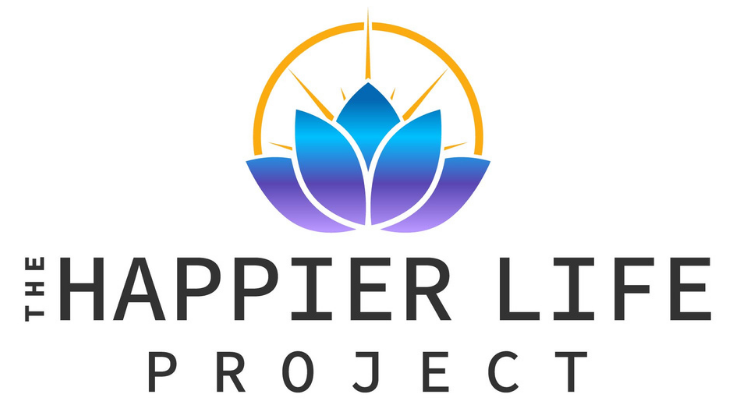Source: By The Fix staff 10/22/21
Rapid detox, sedation-assisted detox, nor any other form of detoxification under anesthesia is not a cure for addiction and should not be described as one.
For individuals struggling with opiate dependence, detox and, subsequently, withdrawal symptoms can be the first step in gaining freedom. Successful opioid detoxification can help accomplish this goal. Rapid detox allows for a complete detoxification from opiates while the patient is under sedation. The process is also beneficial because it enables the patient to immediately start Naltrexone or Vivitrol therapy, both non-addictive drugs that significantly help reduce physical cravings after detox. Controlled studies have found that this form of detoxification is both practical and cost-effective.
However, it\’s important to note that not all forms of detoxification under sedation are the same. Since anesthesia detox was developed in 1988, centers have adopted various protocols; some might even promise complete treatment after one day. While the idea of immediate relief from opioid dependency and the withdrawals accompanying detoxification efforts may appeal to those in the grip of addiction, such promises are not fair, accurate, and sadly enough, often not safe.
The continued use of opioid drugs causes the body to become dependent. Opioid dependence leads to withdrawal symptoms, which makes it difficult to discontinue use. Once a user stops using opioids, the body goes through tremendous physical and emotional distress associated with withdrawal. Symptoms can include muscle pain and spasms, gastrointestinal distress like nausea or vomiting, depression and anxiety, fatigue, and sleeplessness. Dependence is often followed by addiction. Addiction occurs when opioid dependence interferes with daily life. Symptoms of addiction include uncontrollable cravings and the inability to control drug use regardless of the adverse effects on every aspect of one\’s life.
Although rapid detox, sedation-assisted detox, or any other form of detoxification under anesthesia might be extremely appealing, it is not a cure for addiction and should not be described as one. Withdrawal symptoms may be too challenging and physically unsafe for a person already physically and emotionally in a fragile state, making medically supervised detoxification a more viable option. Instead, when performed responsibly, at a proper facility, by an experienced anesthesiologist, sedation-assisted detox is an excellent option for complete opioid detoxification and for reducing physical cravings.
That\’s why Waismann Method® Opioid Treatment Specialists and Rapid Detox Center do not support one-day detox protocols. The Waismann Method team believes that patients deserve comprehensive and responsible medical care. Furthermore, opioid use leads to significant physiological changes that affect the individual on many levels. Having enough inpatient time before detox for stabilization, evaluation, and tailoring of an individualized protocol is as essential for the safety and comfort of the patient as providing inpatient recovery care for a few days after detox.
In 1998, Clare Waismann RAS/SUDCC founded Waismann Method, located in Southern California. After a few years, Mrs. Waismann understood that patients deserved more. Sending them to a hotel room or home immediately after detoxification under sedation was no longer an option. In 2005, Domus Retreat was created: a safe environment where patients can start adapting to this new opioid-free state while receiving professional assistance, care, and guidance around the clock.
For the last 23 years, patients have traveled from all over the world to California, where they receive treatment from a quadruple-board certified medical doctor in their private room of a full-service accredited hospital.
Although most patients come for detoxification under sedation, there are several medically assisted detox options. From a clinical standpoint, opioid withdrawal is one of the most influential factors driving opioid dependence and addictive behaviors. Waismann Detox™ tailors every treatment based on the understanding of each individual\’s specific health needs.
However, not all opioid detox treatment facilities follow the same stringent protocols as Waismann Method. To that end, Waismann and her associates suggest the following criteria when considering a rapid detox or treatment center that offers detoxification under sedation:
- The treating physician should be a board-certified doctor with a degree from a reputable educational institution. Board certifications are rigorous programs that require doctors to continually assess and enhance medical knowledge, professional judgment, and clinical techniques.
- Detox should occur at a full-service accredited hospital. A hospital allows access to medical specialists and immediate medical support with no time constraints for inpatients. This requirement is one of the most frequently overlooked by potential patients, especially those seeking lower-cost options.
- Patients should receive their own private ICU hospital room and individual attention from medical professionals. These are common oversights for patients, and while shared rooms and medical attention may reduce costs, they also carry the potential for greater risk during the procedure and personal discomfort.
- One-day and overnight detox centers can be dangerous for several reasons. Though the potential for instant cures can be appealing, it is usually not the safest option. Doctors must have the time to give patients a comprehensive inpatient evaluation and stabilization care for at least a day before the sedation-assisted detox. Before the procedure, they must also have enough information on the patient\’s intake – food, medication, and other substances – to avoid adverse reactions when the detox drugs are introduced to the patient\’s system.
- Post-detox patients should have access to FDA-approved medication like naltrexone and Vivitrol. They should also stay in a specialized recovery center for a few days where their mental and physical stabilization can be observed and attended to. The additional few days of care allows the patient to become more stable while reducing the risks of immediate relapse.
Waismann advises that individuals considering any form of rapid detoxification conduct comprehensive research into a facility\’s protocols, promises, and, more importantly, physician’s credentials, experience, and affiliation with reputable organizations. It is important to know that although medically assisted detoxification can be a life-saving procedure, there are no overnight miracles; nor is there one exclusive treatment that fits every patient\’s unique health needs.
Opioid use disorder is a multifaceted condition that needs to be treated by a team of specialists with a tailored protocol for each person. No single approach to opioid detoxification is guaranteed to work well for all patients. Therefore, detox centers should offer several options, so no patient is pushed into a procedure that does not meet their specific health needs.

 Alyssa Murray, the administrative assistant at The Happier Life Project works in the background helping The Happier Life Project run smoothly. Alyssa has had both personal and professional experience working with the recovery community which provides her with a unique ability to empathize and connect with those who are affected by addiction as well as mental health conditions.
Alyssa Murray, the administrative assistant at The Happier Life Project works in the background helping The Happier Life Project run smoothly. Alyssa has had both personal and professional experience working with the recovery community which provides her with a unique ability to empathize and connect with those who are affected by addiction as well as mental health conditions. Carolina Ayala, the founder and executive director of The Happier Life Project leads the organization as a trauma-informed certified peer coach, facilitator, and advocate for the recovery community in Riverside County. Carolina’s unique approach combines her years of business administration experience with her direct experience as a justice-involved woman in long-term recovery.
Carolina Ayala, the founder and executive director of The Happier Life Project leads the organization as a trauma-informed certified peer coach, facilitator, and advocate for the recovery community in Riverside County. Carolina’s unique approach combines her years of business administration experience with her direct experience as a justice-involved woman in long-term recovery.
 A founding board member with lived experience. As an early team member of Happier Life Project, Madeline is devoted to reducing stigma around Substance Use Disorder and Mental Health Disorders and helping connect people in need to resources. While pursuing a degree in Psychology, she is a Certified Mindfulness Meditation teacher and is constantly exploring the intersection of nature and therapy though studying family constellation therapy, equine therapy, sustainable living practices, and permaculture. Madelina Collective is a network of women around the world who collaborate with the shared goal of bringing change, inspiration, and perspective to the world through art and innovation. She is actively engaged in fostering creativity and connection amongst women from diverse backgrounds in an effort to be a light for other seekers.
A founding board member with lived experience. As an early team member of Happier Life Project, Madeline is devoted to reducing stigma around Substance Use Disorder and Mental Health Disorders and helping connect people in need to resources. While pursuing a degree in Psychology, she is a Certified Mindfulness Meditation teacher and is constantly exploring the intersection of nature and therapy though studying family constellation therapy, equine therapy, sustainable living practices, and permaculture. Madelina Collective is a network of women around the world who collaborate with the shared goal of bringing change, inspiration, and perspective to the world through art and innovation. She is actively engaged in fostering creativity and connection amongst women from diverse backgrounds in an effort to be a light for other seekers. Leah is first and foremost a relationship builder who recognizes the significance of working in a collaborative and welcoming environment.
Leah is first and foremost a relationship builder who recognizes the significance of working in a collaborative and welcoming environment.